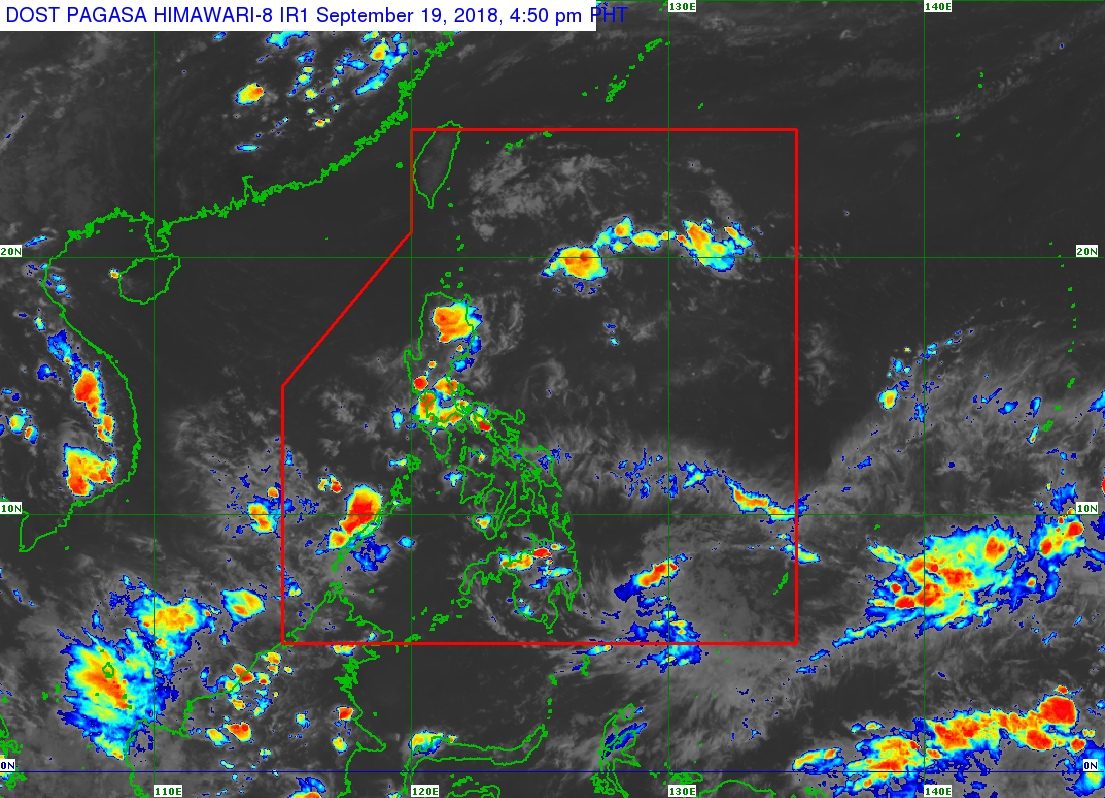SUMMARY
This is AI generated summarization, which may have errors. For context, always refer to the full article.

What’s the weather like in your area? Report the situation through Rappler’s Agos or tweet us at @rapplerdotcom.
MANILA, Philippines – A low pressure area (LPA) was spotted outside the Philippine Area of Responsibility (PAR) on Wednesday, September 19.
In a Facebook Live video past 5 pm on Wednesday, the Philippine Atmospheric, Geophysical, and Astronomical Services Administration (PAGASA) said the LPA is located 2,550 kilometers east of Mindanao.
According to PAGASA Weather Specialist Aldczar Aurelio, the LPA could enter PAR this weekend, September 22 to 23, and possibly develop into a tropical depression.
If it does become a tropical depression, it would be given the local name Paeng. (READ: LIST: PAGASA’s names for tropical cyclones in 2018)
So far, the Philippines has had 15 tropical cyclones in 2018. The country usually gets an average of 20 tropical cyclones per year.
Meanwhile, the intertropical convergence zone (ITCZ) will affect Southern Luzon, the Visayas, and Mindanao on Thursday, September 20.
The ITCZ is a belt near the equator where the trade winds of the Northern Hemisphere and Southern Hemisphere meet, usually causing low pressure areas or thunderstorms. (READ: FAST FACTS: Tropical cyclones, rainfall advisories)
In a bulletin issued 4 pm on Wednesday, PAGASA warned there would be scattered rains and thunderstorms in the regions of Metro Manila, Bicol, Calabarzon, Mimaropa, and Eastern Visayas, as well as the provinces of Aurora and Isabela.
Residents of those areas should be on alert for possible flash floods and landslides.
The rest of the country will only have localized thunderstorms on Thursday, mostly in the afternoon or evening. But flash floods and landslides are also possible if the thunderstorms bring heavy rain.
Parts of Luzon are still reeling from the impact of Typhoon Ompong (Mangkhut), which left dozens of people dead and caused destruction in provinces up north. (READ: Areas under state of calamity due to Typhoon Ompong)
PAGASA declared the start of the rainy season last June 8. – Rappler.com
Add a comment
How does this make you feel?
There are no comments yet. Add your comment to start the conversation.